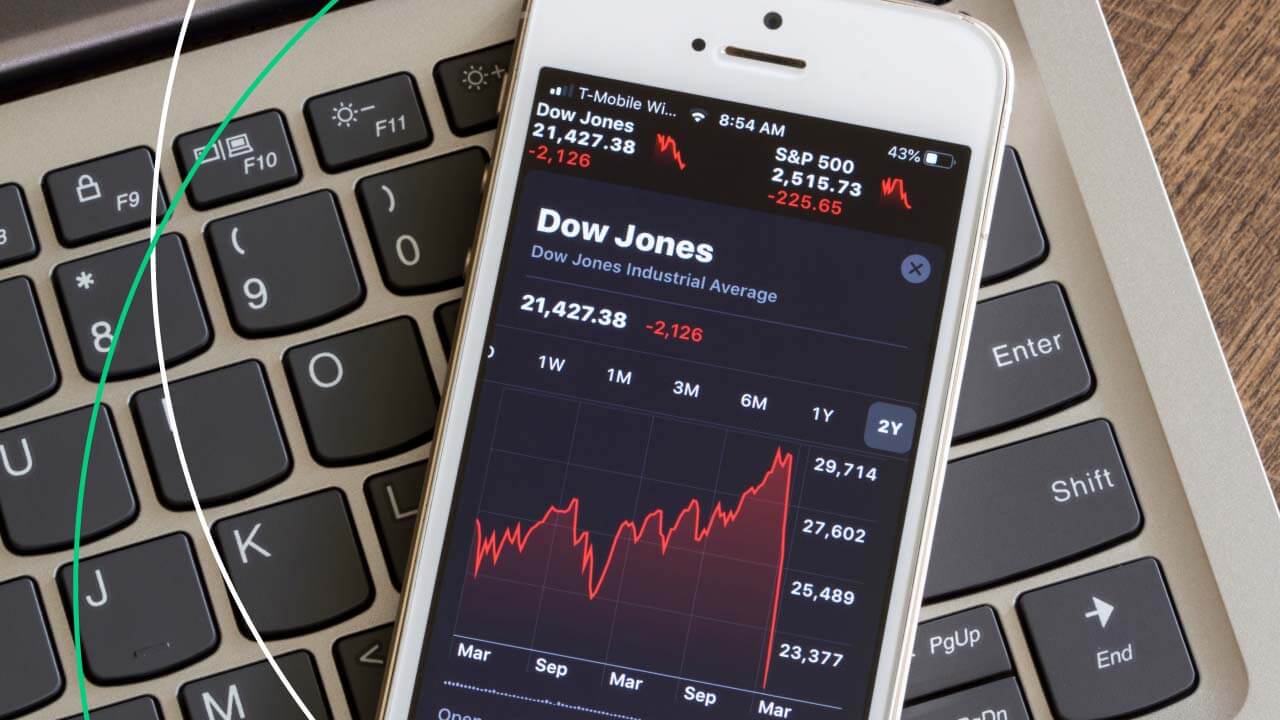Index trading has grown over the years and has become popular for offering reasonable returns for some traders. Traders can enter either long or short positions and mitigate risk by hedging positions. Indices are also traded on margin, which means that you may open a large position with a small deposit.
What is an Index?
An Index measures Stock performances in the securities market. Companies must qualify for a set of criteria to be listed under a particular Index. There are several Indices, including the global Stock Market Index like S&P Global 1200, FTSE All-World Index, S&P Global 100, industry-based Stock market Indices like NASDAQ Biotechnology Index, Dow Industrials Index, Nifty Bank Index, and more.
What is Index trading?
Index trading allows you to trade a specific group of Stocks or Index, belonging to a Stock exchange market. It involves trading and speculating on their prices to potentially earn a profit. You do not actually buy an underlying Stock in Index trading. Instead, you trade the average performance of all the Stocks present in the Index.
As the average price of all Shares go up, the Index value also increases and vice versa. The most popular way to trade an Index is through a Contract for Difference (CFDs).
While Index trading is often confused with Stock trading, there are some differences between the two:
- Stock trading involves trading an individual company listed on the Stock Exchange with an individual price. However, Index trading involves trading a group of Stocks of different prices.
- In Stock trading, a trader has ownership of the Stocks. On the other hand, traders do not own real Stocks in Index trading. Instead, they trade the fluctuating Index fund prices.
- Falling or rising Stock prices only determine the company’s health. In contrast, the falling and rising Index prices determine the overall health of the securities market and the country’s economy.
Why should you trade indices?
Take advantage of rising and falling markets
Trading Index CFDs allows you to go both long and short on markets. This means that you can buy more of the Index CFD when you expect the market prices to rise, and sell if you expect it to fall.
Hedge existing positions
Index trading involves trading on price fluctuations of several Shares. This allows you to short the Index to avoid losses that might occur due to a market downturn. A short position leads to an increase in the Index’s value when a market falls, which helps offset losses.
Trade with leverage
Since CFDs is a leveraged instrument you can trade Indices with leverage. All you need to do is deposit a margin, then open a position in the market. For example, if the margin requirement is 10%, you can open a $10,000 position by depositing $1,000 (10% of $10,000).
How to trade indices?
1. Decide how to enter the market
You can trade Indices either through CFDs, futures, or options markets. All of these methods follow a contract-based trade that allows you to trade with mirrored price movements of the Stocks included in the Index.
2. Learn the Index’s price
You can get prices through Cash Indices, Exchange Traded Funds, or Index futures. You can even base your trade by defining a weighted average criterion. Choosing one of the methods according to your specific requirement and trading goals will help you place ideal trades.
3. Create a trading account
You can create a trading account with an online trading broker that offers Index trading. Brokers provide different spreads leading to the size of your potential profit. There are also different Indices that you can trade.
4. Select the particular Index you want to trade
Choosing which Indices to trade depends on your trading goals, risk appetite, capital, and other aspects. Choose the Index that fits your trading style after reading about the Stocks involved in the Index fund.
5. Decide if you want to go long or short
Once you decide the Index you want to trade, determine if you're going to place a long trade or short trade.
- Long positions are typically made if you expect the prices to rise
- Short positions are usually taken if you expect the prices to fall
6. Set stop and limit orders
Stop and limit orders manage risk and protect your trades from losses. A stop order allows you to close your trade automatically if the market moves against you. While a limit order closes your position automatically as soon as the trade prices move to a more favorable position and locks in gained profits.
7. Open trade and monitor it
As soon as you are ready to start trading your Index fund, open a position with your broker. Monitor it regularly to see the market price fluctuations and capture any potential gains or manage losses.
Start trading Indices with Blueberry
Index trading offers you exposure to a more liquid market and diversifies your financial portfolio. It also helps you gain considerable market exposure through leveraged trading while being one of the fastest-growing trading funds.
You can start trading your favorite Indices today by opening a trading account with Blueberry.
Disclaimer: All material published on our website is intended for informational purposes only and should not be considered personal advice or recommendation. As margin FX/CFDs are highly leveraged products, your gains and losses are magnified, and you could lose substantially more than your initial deposit. Investing in margin FX/CFDs does not give you any entitlements or rights to the underlying assets (e.g. the right to receive dividend payments). CFDs carry a high risk of investment loss.




